The History Of The Donut And Why We Love It So Much
Find out where donuts originated and why we love them so much.
This article is more than 2 years old
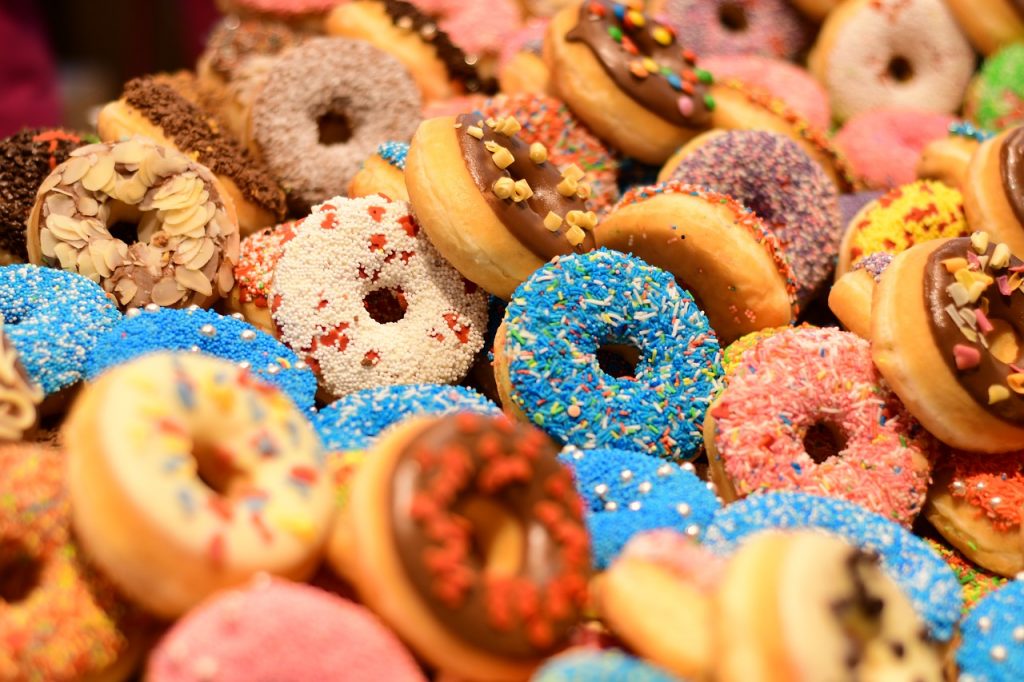
They could be the greatest food invention the world has ever seen. You can buy them individually, by the half dozen, the dozen, and even the baker’s dozen. Their aroma can easily take you back to your fondest of childhood memories, just as much as it can get your mouth watering in anticipation. One bite could send shockwaves throughout your body as blood sugar levels shoot to dizzying heights. Yes, the donut has that delicious effect.
Fried dough has been around for an awfully long time. It can probably be traced back to when flour was milled, and animal fat was close at hand. In America, though, the doughnut, or donut, is a fairly new concept. But how “new” is new? Who do we thank for such the wondrously delicious and uber-sweet treat?
The donut has become an American staple for many. Coffee and donuts have turned into an amazing duo. You will find them at home, on worksites, in the office, and even on long road trips. The road trip we are going to take now will be to the past. We are going to take a look at the origins of the doughnut and hopefully answer that one important question – Why is there a hole in the middle?
OLYKOEKS
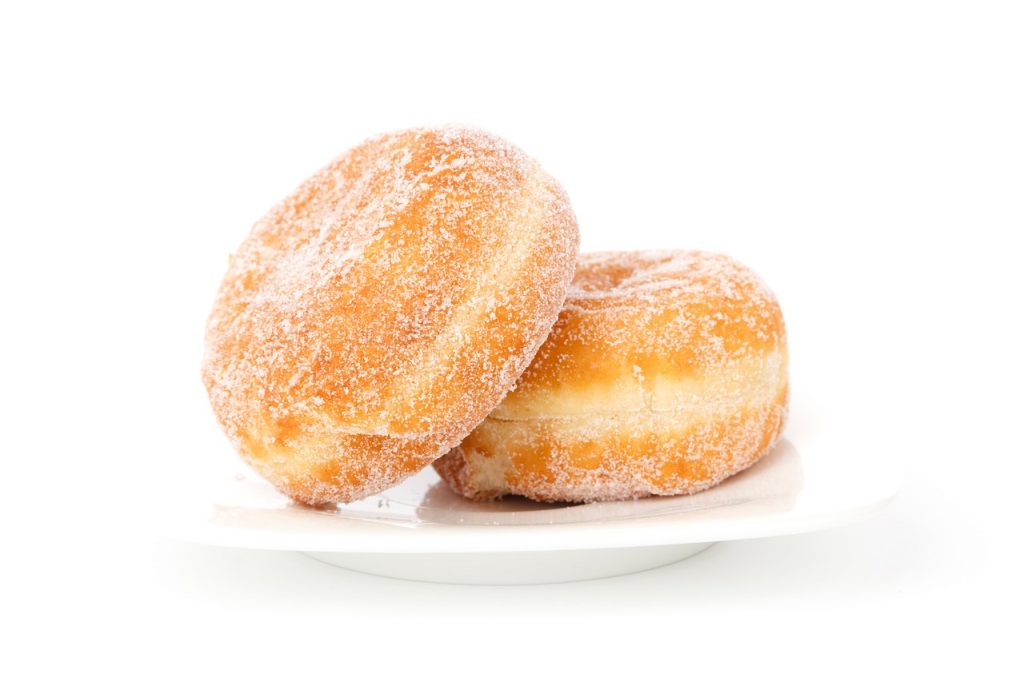
The history of the donut can be a bit muddled. Were they Russian inventions? French? Dutch? Just about every culture has its own special form of fried dough so pinpointing an actual origin can be as difficult as putting down that maple bar.
Most donut historians point to the Dutch as the country of origin. They were called olykoeken (oily cakes) and were quite different than what we today call the donut. Instead of the wonderfully shaped circle with a hole in it, the olykoeks were small round balls of fried dough. As many were fried in animal fat, the taste leaned more to the meaty side of the ledger.
They were most definitely a Dutch treat. In fact, a recipe for those fried morsels even appears in a 17th-Century Dutch cookbook with a simple description: they are leavened with yeast and studded with dried fruit.
“DOUGHNUTS” IN AMERICA
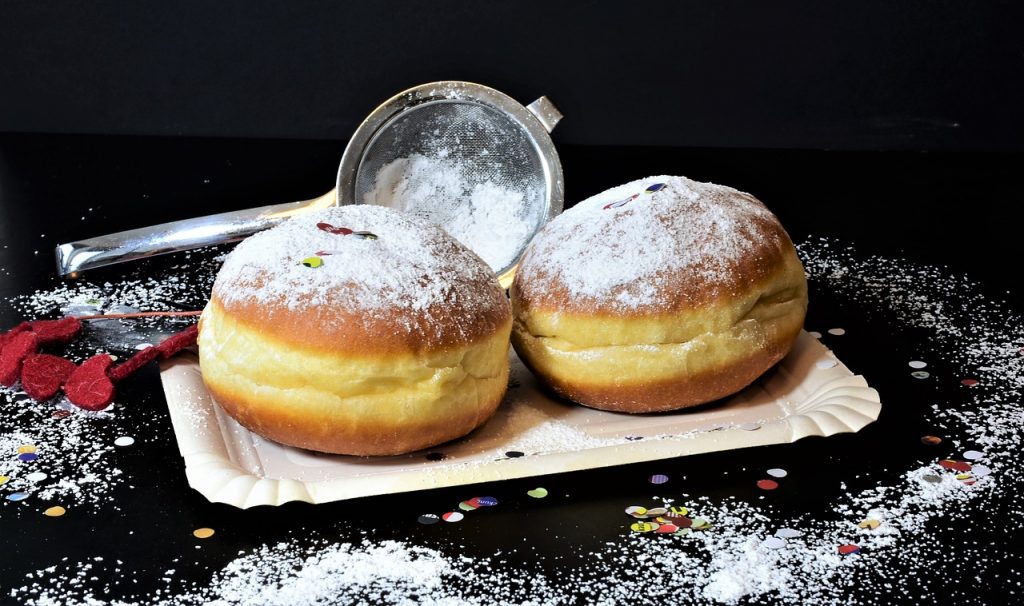
It wasn’t until the Dutch began to immigrate and settle in the United States that we began to enjoy the tasty treats. But as they were from Dutch origins, the initial doughnut was a simple ball of dough. Because the center would not cook as fast as the rest of the doughnut, they would many times be filled with fruit, nuts, or any other kind of filling that did not require any cooking.
When they arrived in New Amsterdam (what is now called Manhattan), American’s fell in love with them. But like the Dutch, American’s were trying to figure out a solution for the gooey middle as the idea of filling each and everyone one was becoming more of a chore than anything.
THE “HOLE” TRUTH AND NOTHING BUT THE TRUTH
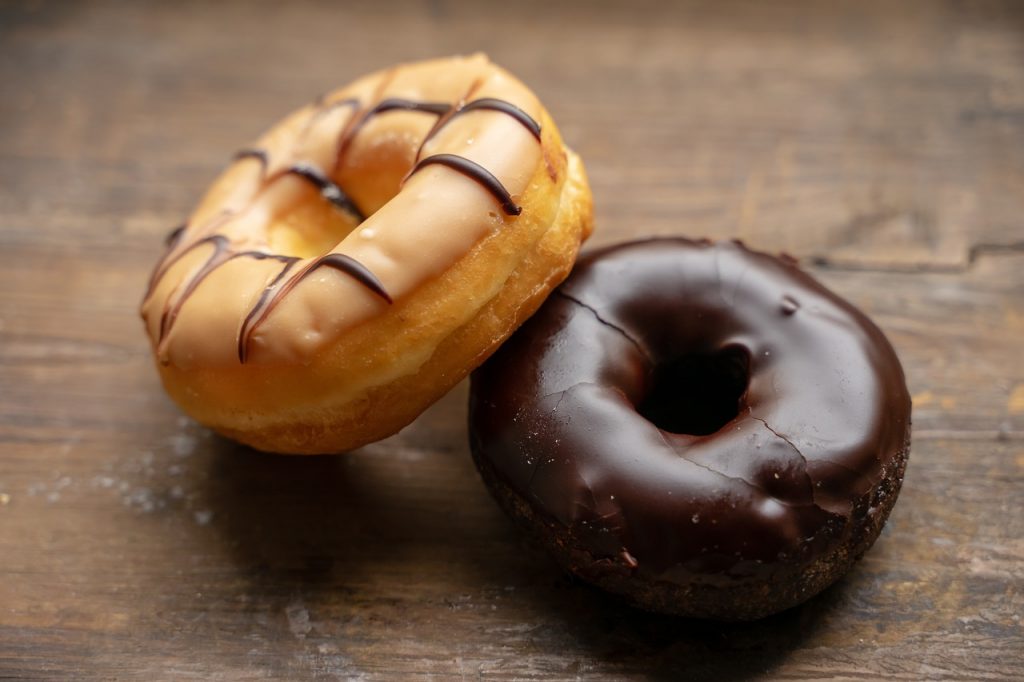
This history behind the donut hole is tinged with conjecture. Was it to help ease digestion, as some claim? Was it to save donut makers on ingredients, as others claim? One of the best and most popular theories behind the new shape of the donut comes from the mid-19th Century and a New England ship captain’s mom named Elizabeth Gregory.
Seems Mrs. Gregory had perfected the Dutch olykoek. She would use her son’s, Captain Hanson Gregory, spice cargo that included cinnamon and nutmeg and sprinkle it over the warm doughnuts. She baked plenty for her son and crewmates for their long voyages across the seas as a way to help them ward off colds and scurvy. A donut takes out a cold? Sign us up. But to take care of the uncooked middle, Mrs. Gregory would fill them with nuts, hence “dough nuts.”
But it was Captain Gregory who lays claim to the ultimate donut invention – the donut hole. As legend has it, it wasn’t Captain Gregory skimping on ingredients or the need to make the doughnut easier to digest. No, the “truth” of the matter is that Captain Gregory needed to keep both hands on the wheel during a storm, so he skewered the doughnut on a spoke of his ship’s wheel. That was the advent of the donut hole.
It wasn’t until much later in Captain Gregory’s life that in an interview with the Bost Post that he claimed the ship’s wheel was a fabrication and that the true story was that during one of his voyages, he used the top of a round tin pepper box to cut a hole in the middle of Mrs. Gregory’s doughnuts.
SHAPING THE FUTURE

As doughnuts made their way to America, they were only popular in small circles. One of the very first times doughnuts was mentioned in American writing came in 1809 from Washington Irving, the author of such works as Rip Van Winkle and The Legend of Sleepy Hollow. In his Knickerbocker’s History of New York musings, Irving speaks of “primitive tea parties” and goes on to describe them. “These fashionable parties were generally confined to the higher classes or noblesse: that is to say, such as kept their own cows and drove their own wagons.” he wrote. “It was always sure to boast an enormous dish of balls of sweetened dough, fried in hog’s fat, and called doughnuts, or olykoeks – a delicious kind of cake, at present scarce known in this city, except in genuine Dutch families.”
It wasn’t until men came home from World War I that the doughnut began to really take off. While in the trenches in France, they were routinely served up the tasty treat by women who would even bring them to the front lines. The boys were looking for that same treat when they returned.
The very first doughnut machine came into existence in New York City in 1920. Adolph Levitt was a baker who began to sell doughnuts from his bakery. But he couldn’t keep up with the rush of hungry theater crowds, who wanted more and wanted them faster than his hands could crank out. So, to appease the crowds, he invented a gadget that allowed him to crank out donut after donut.
It was a hit. Levitt’s machine showed that the donut could now be considered more than just a tasty treat but something that could be served anywhere. Donut shops began to pop up across the city and suddenly they were finding spots across the country.
THE BIG THREE
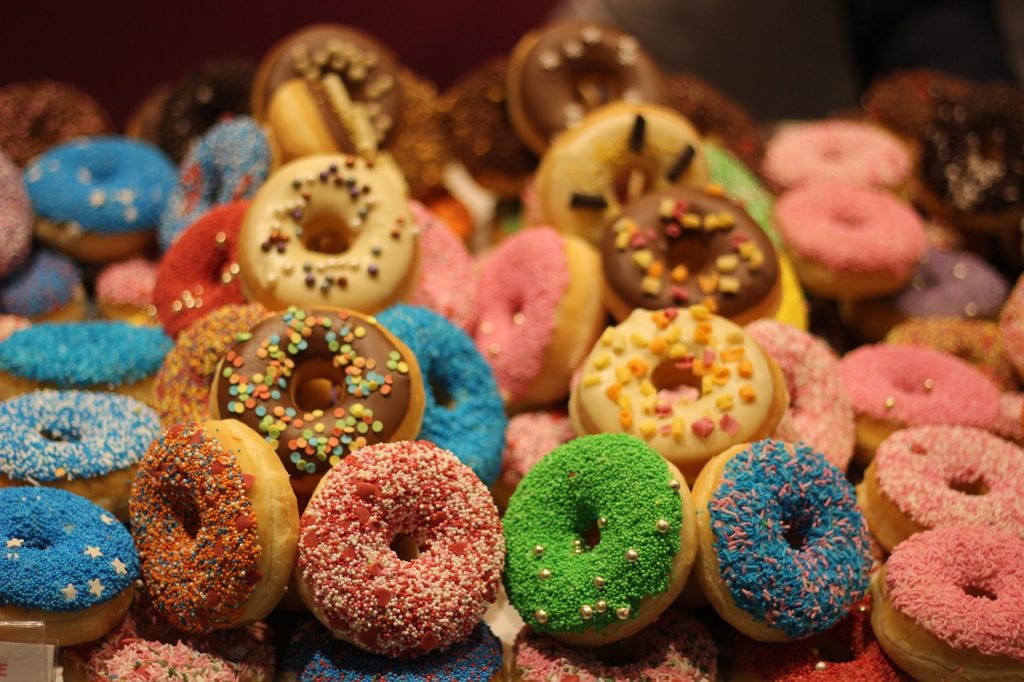
The very first donut chain was Krispy Kreme. Vernon Rudolph founded it in Old Salem in North Carolina in 1937. It was an immediate hit that gave birth to numerous other donut shops. Seeing the popularity of Krispy Kreme, Verne Winchell decided to cash in on it. Winchell’s Donut House followed in 1948 and their legend was born.
Not to be outdone, William Rosenberg decided to open up a little shop in Quincy, Massachusetts in 1950. This little shop is now the biggest coffee and donut shop in the world. You know it as Dunkin’ Donuts.
The big three continue to crank out that fried dough with a hole in the center. Winchell’s has faded over the past few decades, though they still have a big footprint on the west coast. You will find both Krispy Kreme and Dunkin’ Donuts scattered everywhere across the country.
Of course, there are plenty of other spots, other than those chain donut shops, where you can get your fix. Every local bakery is sure to have a great selection and some, like Voodoo Doughnuts, have turned donuts into an art form.
What’s your favorite donut? Let us know.





